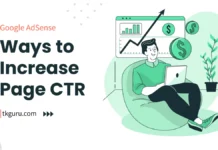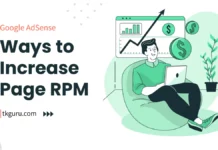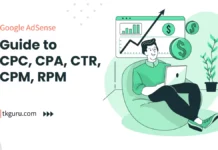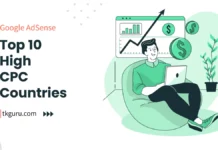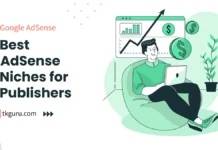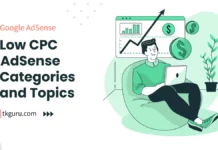Advertisements
Ratings
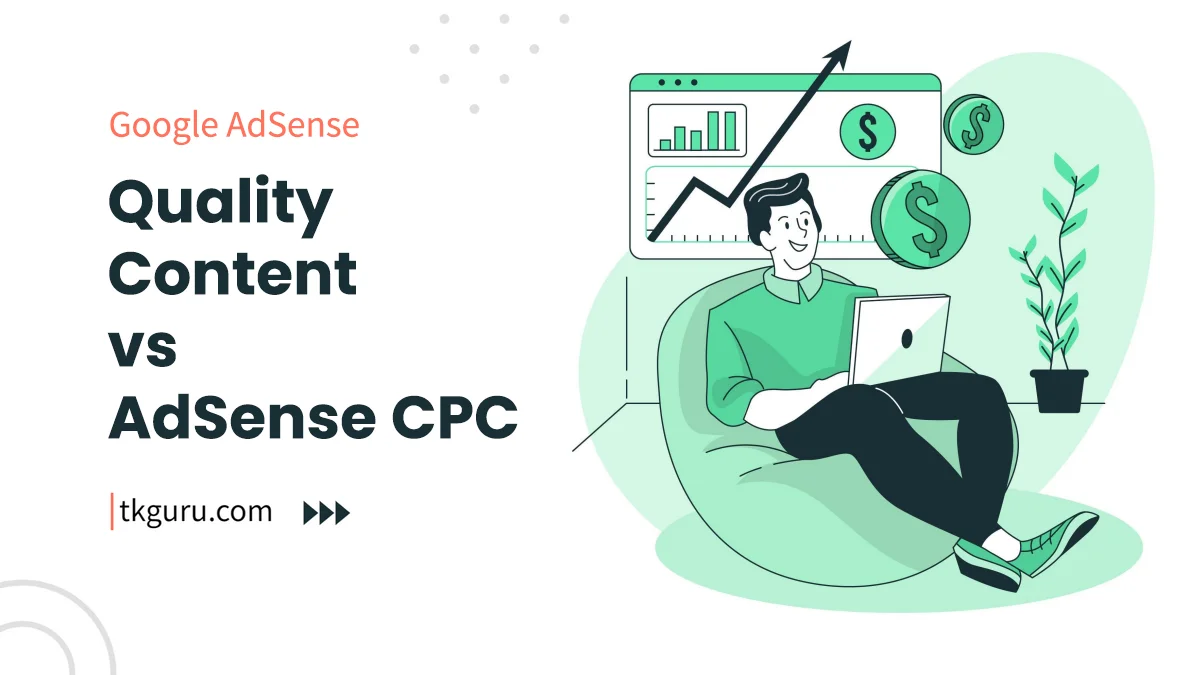
Quality Content and AdSense CPC – Google AdSense is a popular monetization method for website owners and bloggers.
AdSense generates revenue through the CPC (Cost Per Click) model, where publishers earn money every time a user clicks on an ad displayed on their website.
The CPC rates can vary widely, and one of the key factors influencing these rates is the quality of the content on the website.
Contents
- 1. The Impact of Quality Content on User Engagement
- 2. Content Relevance and Ad Relevance
- 3. Dwell Time and its Influence on CPC Rates
- 4. User Intent and Ad Engagement
- 5. Building Trust and Brand Reputation
- 6. User Experience and Page Load Speed
- 7. Ad Placement and Visibility
- 8. Responsive and Mobile-Friendly Design
- 9. A/B Testing and Optimization
- 10. Ad Quality and Relevance
- 11. Ad Blockers and User Engagement
- Conclusion: Unlocking Higher AdSense CPC Rates
- Quality Content and AdSense CPC FAQs
1. The Impact of Quality Content on User Engagement
Quality content is the foundation of any successful website. It’s what attracts visitors, keeps them engaged, and encourages them to return.
When users find valuable and engaging content, they’re more likely to spend more time on the website, exploring different pages and interacting with the ads.
Effective content goes beyond just keywords and information; it speaks to the needs and interests of the audience. This relevance not only benefits user engagement but also impacts ad engagement.
When users are already interested in the content, they’re more likely to interact with related ads, leading to higher CPC rates.
Table 1: Examples of Websites Benefiting from Quality Content
| Website | Niche | Content Approach | Result |
|---|---|---|---|
| Health and Wellness | Health | In-depth articles, expert contributions | Longer dwell time, higher ad engagement |
| Travel Blog | Travel | Personal travel experiences, detailed guides | Increased ad clicks, improved CPC rates |
| Technology Review | Technology | Comprehensive product reviews, tutorials | Better ad relevance, enhanced user engagement |
| Lifestyle Blog | Lifestyle | Creative storytelling, practical tips | Increased ad visibility, improved CPC rates |
2. Content Relevance and Ad Relevance
Ad relevance is a crucial factor in determining CPC rates. When ads are closely aligned with the content and interests of the website visitors, they’re more likely to be clicked on.
This alignment creates a seamless user experience where the ads provide additional value to the user’s interests.
Google’s ad targeting algorithms play a significant role in ensuring ad relevance.
These algorithms analyze the content of the website and the behavior of the users to display ads that are most likely to resonate with the audience.
Websites with highly relevant content tend to have ads that are better aligned with user intent, resulting in improved CPC rates.
Table 2: Success Stories of Improved CPC through Content Relevance
| Website | Niche | Approach to Content Relevance | Result |
|---|---|---|---|
| Cooking Blog | Food | Content around recipes, kitchen tips | Ads closely related, higher ad engagement |
| Fitness Website | Fitness | Workouts, nutrition advice, product reviews | Enhanced ad relevance, improved CPC rates |
| DIY Blog | Home Improvement | Step-by-step guides, project ideas | Relevant ads, increased ad interaction |
3. Dwell Time and its Influence on CPC Rates
Dwell time refers to the duration users spend on a webpage before returning to the search results or navigating to another page.
Longer dwell times are indicative of user engagement and interest in the content. This prolonged engagement also provides more opportunities for users to notice and interact with ads.
Google’s algorithms take dwell time into account when evaluating the quality of a webpage.
A longer dwell time is often associated with relevant and engaging content, which in turn contributes to better ad engagement.
Websites that manage to keep users engaged and on their pages for a longer time tend to experience higher CPC rates.
Table 3: Websites Increasing CPC Rates by Extending Dwell Time
| Website | Niche | Approach to Increasing Dwell Time | Result |
|---|---|---|---|
| News Portal | News | In-depth articles, multimedia content | Longer dwell time, higher ad interaction |
| Educational Site | Education | Comprehensive tutorials, interactive content | Extended dwell time, improved CPC rates |
| Entertainment Blog | Entertainment | Engaging videos, interactive quizzes | Enhanced user engagement, increased CPC |
4. User Intent and Ad Engagement
Understanding user intent is crucial for delivering the right content and ads to the audience.
Different users have varying intents when visiting a website—whether seeking information, making a purchase, or finding entertainment.
Content that aligns with user intent not only enhances the user experience but also improves ad engagement.
When users find content that meets their specific needs, they’re more likely to engage with related ads.
For instance, if a user is researching the best laptops, an ad for laptop deals becomes more relevant.
Understanding user intent allows publishers to create content that complements the ads, resulting in higher click-through rates and, consequently, improved CPC rates.
Table 4: Ad Engagement Optimized Through Understanding User Intent
| Website | Niche | User Intent Strategy | Result |
|---|---|---|---|
| Product Reviews | Technology | In-depth comparisons, buying guides | Increased ad relevance, higher CPC rates |
| Fashion Blog | Fashion | Styling tips, outfit ideas | Enhanced ad engagement, improved CPC rates |
| Financial Advice | Finance | Expert financial tips, budgeting guides | Better ad alignment, improved CPC rates |
5. Building Trust and Brand Reputation
Trust and credibility play a vital role in both user engagement and ad interaction. Quality content that provides accurate information, valuable insights, and helpful solutions builds trust with the audience.
When users trust the content, they’re more likely to trust the ads displayed on the website as well.
Websites with strong brand reputations benefit from higher user confidence. Users are more willing to engage with ads from reputable sources, knowing that they’re likely to offer genuine value.
Trust mitigates ad blindness, a phenomenon where users ignore ads due to perceived irrelevance.
By fostering trust, websites can encourage users to interact with ads, thus improving CPC rates.
Table 5: Trust and Reputation Impacting Ad Engagement
| Website | Niche | Trust-Building Approach | Result |
|---|---|---|---|
| Health Blog | Health | Medical experts’ contributions | Enhanced user trust, improved CPC rates |
| Finance Platform | Finance | Transparent financial advice | Trusted ads, increased ad interaction |
| Travel Website | Travel | Verified user reviews, detailed guides | Established credibility, improved CPC |
6. User Experience and Page Load Speed
User experience (UX) plays a crucial role in website engagement and ad interaction. A positive UX includes factors such as easy navigation, mobile responsiveness, and fast page load speeds.
Slow-loading pages can lead to higher bounce rates, lower engagement, and fewer opportunities for users to interact with ads.
Page load speed is especially critical for mobile users who expect fast and seamless experiences.
Google considers mobile-friendliness and page speed when determining search rankings, which can indirectly affect ad visibility and engagement.
Websites that prioritize a smooth user experience, including fast loading times, tend to experience higher ad engagement and CPC rates.
Table 6: Enhanced CPC Rates through Improved User Experience
| Website | Niche | User Experience Optimization | Result |
|---|---|---|---|
| E-commerce Store | E-commerce | Fast-loading product pages | Lower bounce rates, increased ad interaction |
| Recipe Blog | Food | Mobile-responsive design | Improved mobile experience, higher CPC rates |
| Travel Portal | Travel | Quick-loading travel guides | Enhanced user satisfaction, improved CPC |
7. Ad Placement and Visibility
Strategically placing ads within the content is essential for optimizing ad visibility and engagement.
While it’s important to integrate ads seamlessly, they should also be strategically positioned to catch the user’s attention.
However, excessive ad placements can lead to a cluttered and disruptive user experience, negatively impacting engagement.
Balancing ad placement and user experience is crucial. Placing ads within the natural reading flow or close to engaging content can result in higher click-through rates.
Additionally, experimenting with ad formats, such as native ads, can help improve ad visibility while maintaining a positive user experience.
Table 7: Successful Ad Placement Strategies and Improved CPC Rates
| Website | Niche | Ad Placement Strategy | Result |
|---|---|---|---|
| Tech Blog | Technology | In-content native ad integration | Increased ad visibility, higher CPC rates |
| Lifestyle Website | Lifestyle | Sidebar ads near relevant content | Improved ad engagement, enhanced CPC rates |
| Finance Blog | Finance | Intuitive ad placements | Better ad visibility, improved ad interaction |
8. Responsive and Mobile-Friendly Design
As mobile devices continue to dominate internet usage, having a responsive and mobile-friendly design is paramount.
Google’s algorithms prioritize mobile-friendly websites, considering them more valuable for users.
Websites with designs that adapt seamlessly to different screen sizes and devices offer a better user experience, leading to higher ad engagement.
Mobile-friendly designs ensure that ads are displayed properly on various devices, maintaining their visual appeal and relevance.
When users have a positive mobile experience, they’re more likely to engage with ads, leading to improved CPC rates.
Table 8: Impact of Mobile-Friendly Design on Ad Engagement
| Website | Niche | Mobile-Friendly Design | Result |
|---|---|---|---|
| Travel Blog | Travel | Optimized for mobile viewing | Increased mobile engagement, higher CPC rates |
| Fashion Store | Fashion | Responsive design for all devices | Enhanced user experience, improved CPC rates |
| Tech News Site | Technology | Mobile-optimized layout | Better mobile ad engagement, improved CPC |
9. A/B Testing and Optimization
Continuously optimizing ad performance is key to maximizing CPC rates. A/B testing involves experimenting with different ad formats, placements, colors, and sizes to identify what works best for your audience.
Regularly evaluating the results of these tests and making data-driven decisions can lead to higher ad engagement and CPC rates.
Optimization should extend beyond ads to the entire website. Testing different content layouts, navigation menus, and calls-to-action can contribute to a better user experience and more effective ad engagement.
Table 9: Enhanced Ad Engagement through A/B Testing and Optimization
| Website | Niche | A/B Testing and Optimization | Result |
|---|---|---|---|
| Gaming Blog | Gaming | Testing different ad placements | Improved ad engagement, higher CPC rates |
| Fitness Website | Fitness | Optimizing content for user flow | Enhanced user experience, improved CPC rates |
| Finance Portal | Finance | Testing various ad colors and sizes | Better ad performance, increased CPC rates |
10. Ad Quality and Relevance
The quality and relevance of the ads themselves play a significant role in determining CPC rates.
Google AdSense uses contextual targeting to display ads that match the content of the webpage.
Relevant ads are more likely to attract user attention and engagement, resulting in higher CPC rates.
Publishers can influence ad quality by selecting ad categories that align with their website’s niche.
Additionally, using the Allow & Block Ads feature allows publishers to control the types of ads displayed on their site, ensuring they’re relevant and appealing to their audience.
Table 10: Ad Quality and Relevance Impacting CPC Rates
| Website | Niche | Ad Quality and Relevance Strategy | Result |
|---|---|---|---|
| Travel Blog | Travel | Selecting travel-related ad categories | Improved ad relevance, higher CPC rates |
| Food Recipes Site | Food | Allowing only relevant food ads | Enhanced user experience, improved CPC rates |
| Tech Forum | Technology | Blocking irrelevant ad categories | Better ad alignment, increased CPC rates |
11. Ad Blockers and User Engagement
Ad blockers pose a challenge to CPC rates as they prevent ads from being displayed. While ad blockers are used to enhance user experience by reducing unwanted ads, they also affect ad revenue for publishers.
It’s estimated that a significant percentage of internet users employ ad blockers.
To mitigate the impact of ad blockers, publishers can encourage users to disable ad blockers on their websites.
Some websites offer premium content or exclusive features to users who disable ad blockers, thereby preserving ad revenue and increasing CPC rates.
Table 11: Handling Ad Blockers to Improve Ad Engagement
| Website | Niche | Dealing with Ad Blockers | Result |
|---|---|---|---|
| News Portal | News | Encouraging users to disable blockers | Enhanced ad engagement, improved CPC rates |
| Entertainment Blog | Entertainment | Offering exclusive content | Increased user support, improved CPC rates |
| Fashion E-commerce | Fashion | Educating users about ad importance | Better ad visibility, increased CPC rates |
Conclusion: Unlocking Higher AdSense CPC Rates
In conclusion, while AdSense CPC rates are influenced by a myriad of factors, understanding and implementing these strategies can significantly impact ad engagement and revenue.
From crafting high-quality content to optimizing user experience and ad placement, each element plays a role in driving better CPC rates.
By continuously refining these strategies and experimenting with different approaches, publishers can unlock the potential for higher CPC rates.
Remember that user experience and relevance remain at the core of these efforts. Advertisers value sites that offer a positive user experience, resulting in more competitive bids and ultimately higher CPC rates.
As you implement these strategies, closely monitor your performance metrics, conduct A/B tests, and adapt your approach based on data-driven insights.
By consistently delivering valuable content and optimizing user interactions with ads, you can enhance both user satisfaction and revenue generation through AdSense.
Quality Content and AdSense CPC FAQs
How does quality content affect AdSense CPC?
Quality content positively impacts AdSense CPC (Cost Per Click) by attracting engaged and relevant audiences.
Advertisers are more likely to bid higher for ads displayed on websites with valuable, informative, and engaging content.
Does content relevance impact AdSense CPC rates?
Yes, content relevance is crucial. Advertisers target specific keywords and topics, and if your content aligns well with those keywords, it can lead to higher CPC rates due to better ad targeting.
How can I create quality content that boosts AdSense CPC rates?
Focus on these content creation strategies:
- Research keywords and topics that have higher CPC rates.
- Provide accurate and well-researched information.
- Create engaging and user-friendly content that encourages longer visits.
Can low-quality content negatively affect AdSense CPC rates?
Yes, low-quality content can lead to lower CPC rates. Advertisers want to display their ads on reputable websites with valuable content.
If your content is irrelevant, outdated, or of poor quality, it may negatively impact CPC rates.
Is user engagement with quality content important for CPC rates?
Absolutely. User engagement, including time spent on your site, click-through rates, and interactions, signals to advertisers that your audience is interested in the content. This can result in higher CPC rates.
Creating high-quality, relevant content is not only essential for user satisfaction but also directly impacts AdSense CPC rates.
Prioritize providing value to your audience, optimizing for relevant keywords, and delivering engaging content to attract both users and advertisers, leading to improved earnings.
| Web Hosting | Website |
| WordPress | Google Adsense |
| SEO | Affiliate Marketing |
| Blogging | YouTube |
Recent Posts
- 9 Proven Ways to Increase Page CTR by 50%
- 9 Proven Ways to Increase Page RPM by 50%
- A Detailed Guide to CPC, CPA, CTR, CPM, RPM
- Top 10 High CPC Countries: Maximizing Ad Revenue in Lucrative Markets
Related Tags
adsense cpc rates, how to increase cpc in adsense, adsense cpc in india, low cpc adsense list 2023, adsense cpc calculator, why is my adsense cpc so low, how to increase cpc in google ads, 0.01 cpc adsense

